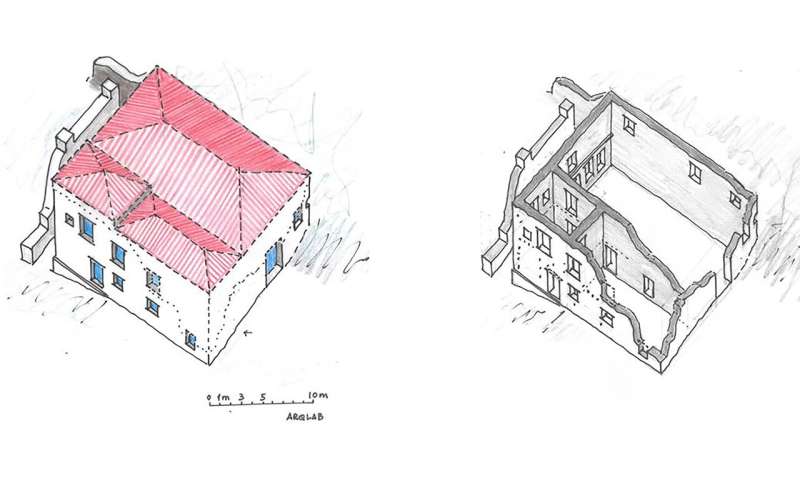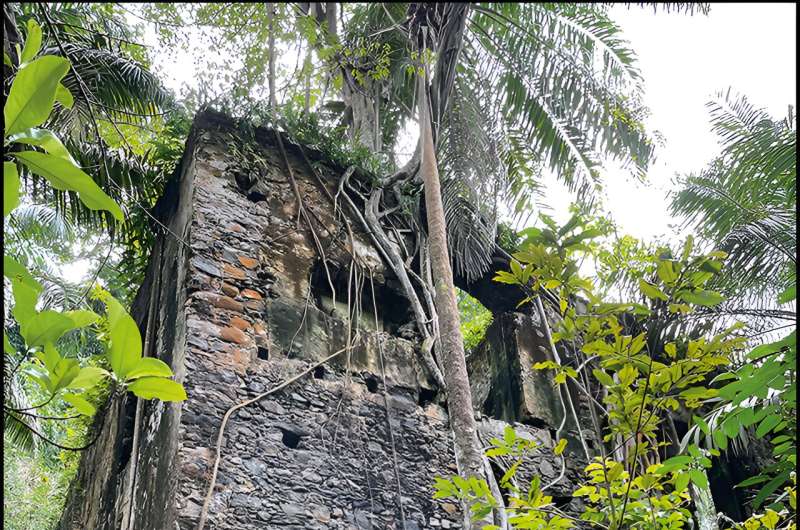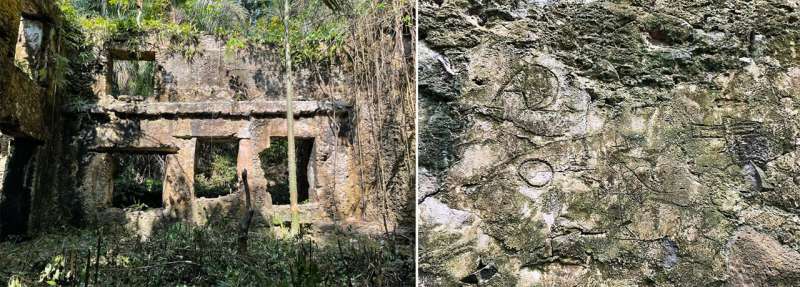This article has been reviewed according to Science X's editorial process and policies. Editors have highlighted the following attributes while ensuring the content's credibility:
fact-checked
peer-reviewed publication
proofread
Origins of the plantation system revealed

The first-ever investigation of an archaeological site on São Tomé is revealing the African island's involvement in the inception of the plantation economic model later exported to the Americas.
In the 1530s, the Portuguese colony of São Tomé was the largest producer of sugar in the world. Its sugar monoculture and reliance on the labor of enslaved Africans created a blueprint for the expansion of plantation economies across the Atlantic.
This economic success was short-lived, however. Competition with Brazil in combination with frequent insurrections by enslaved people meant that the plantation's profits had dwindled by the early 17th century.
Despite the importance of São Tomé for the origins of the Modern Atlantic world, research has predominantly focused on the Caribbean, and North and South America.
"São Tomé was a major nexus between Europe and Africa," state the authors, "but lack of research obscures the significance of this archipelago in the history of the Atlantic world and plantation slavery."
To tackle this, a team lead by Dr. M. Dores Cruz (University of Cologne, and CEAUP) is undertaking archaeological investigation of Praia Melão, São Tomé's largest sugar mill and estate dating to the 16th century. Their initial results are published in the journal Antiquity.

The scale of the building reflects the large enslaved labor force who toiled in the main work room, where mills were operated and sugar was boiled. The craftsmanship of the structure is, of course, the product of enslaved builders. Particularly telling are the building's windows, designed to allow a clear view over the working areas so that enslaved laborers could be surveilled.
Ceramic sugar molds are common at the site, both littering the ground and embedded in walls. X-ray fluorescence—a technique used to determine elemental composition of materials—allowed their origins to be determined. In this case, three sherds of molds were analyzed and it was discovered that they were made in the Aveiro-Ovar region, Portugal, a major center for ceramic production at the time.
Importantly, these findings display how the plantation economic model later applied in the Americas originated, and the long-distance connections required to facilitate its success. As such, this study could have dramatic implications for our understanding of colonial history.

It also highlights the need to perform archaeological investigations at lesser-researched sites to ensure that crucial heritage is not lost.
"The tropical environment, encroaching vegetation, economic development and potential human impacts heighten the site's risk of destruction," state the authors, "making protection efforts and further archaeological investigations fundamental for its preservation."
More information: M. Dores Cruz et al, Bitter legacy: archaeology of early sugar plantation and slavery in São Tomé, Antiquity (2023). DOI: 10.15184/aqy.2023.113
Journal information: Antiquity
Provided by Antiquity




















